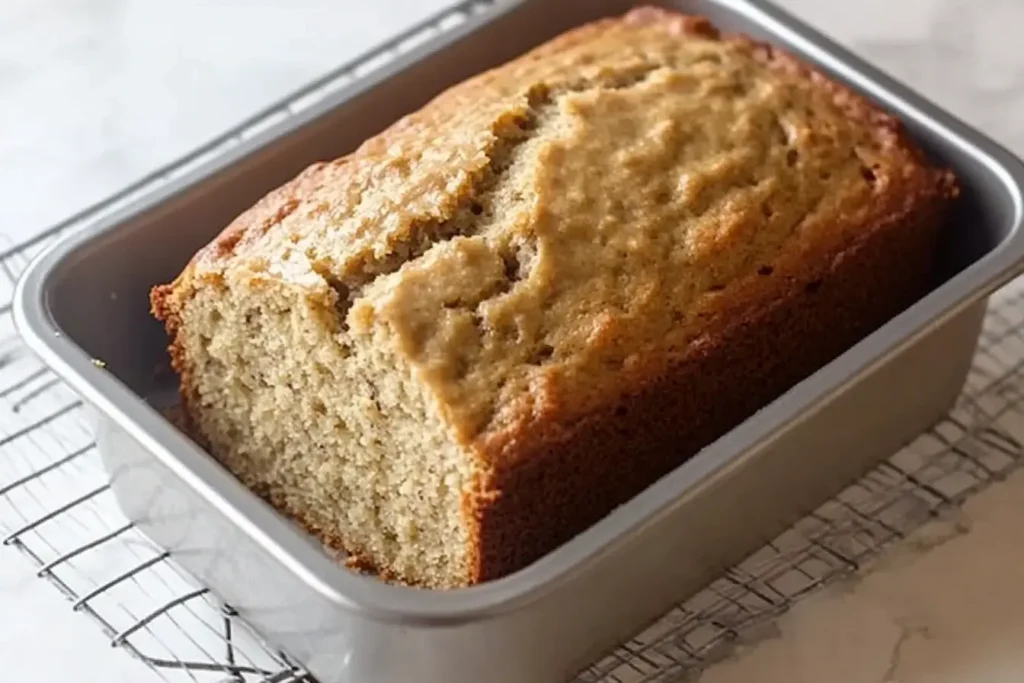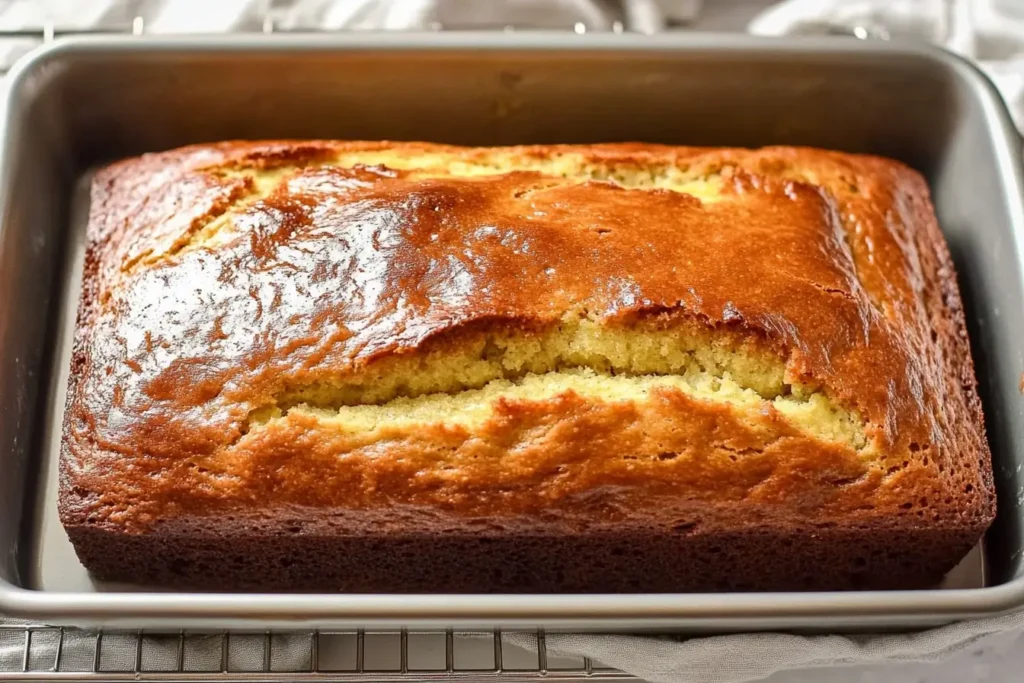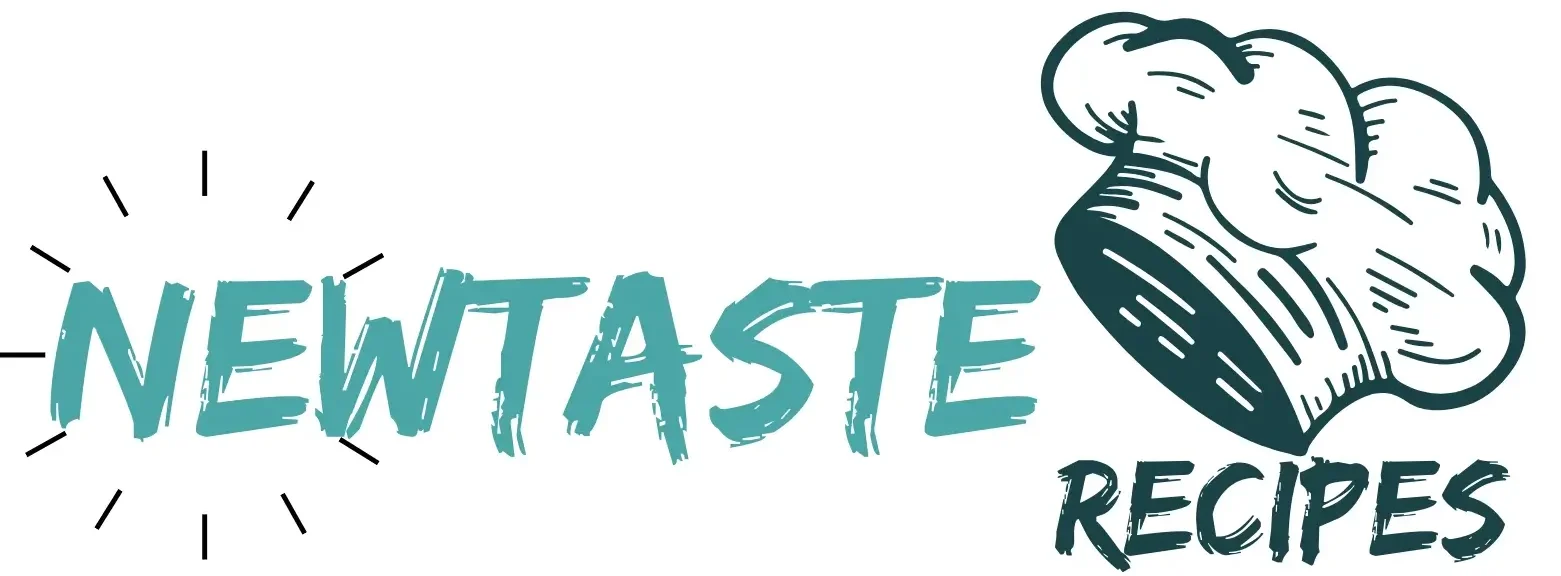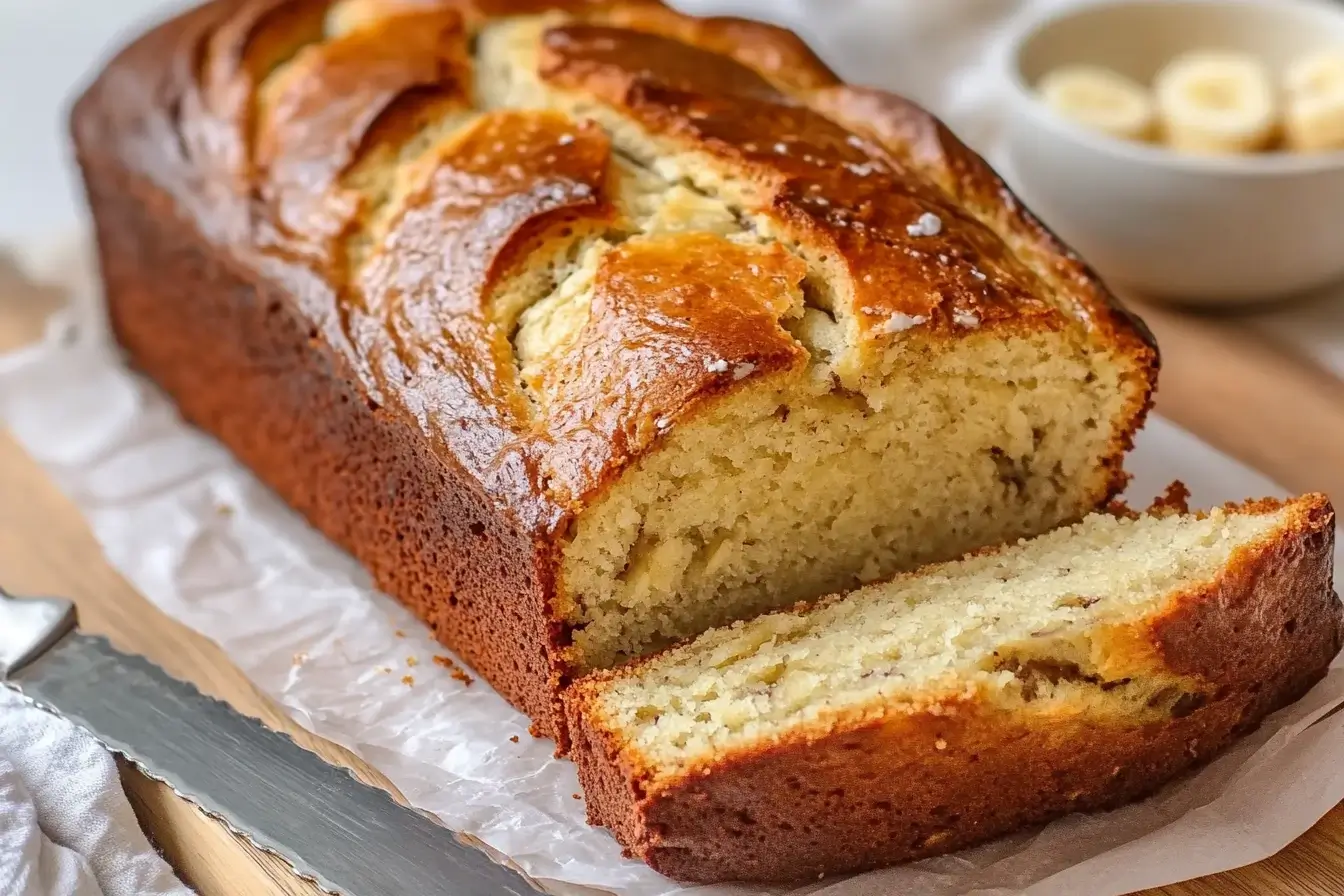Banana bread holds a special place in kitchens and hearts across the globe. Known for its comforting aroma, moist texture, and versatility, this timeless treat has become a staple for home bakers. Whether you’re a seasoned chef or new to baking, banana bread is an easy recipe to master with endless opportunities for creativity. This guide will take you through everything you need to know about making perfect banana bread, from its history to avoiding common mistakes.
Why Is This Bread So Beloved?
Banana bread isn’t just another dessert; it’s a cultural icon. Let’s explore why this simple baked good is loved by millions.
The History of Banana Bread
Banana bread’s origins date back to the early 20th century, coinciding with the rise of chemical leaveners like baking soda and baking powder. These innovations allowed bakers to create fluffy, moist bread without relying solely on yeast. The Great Depression further cemented banana bread’s popularity as households sought ways to avoid food waste. Overripe bananas, which would otherwise be discarded, became the perfect base for this delicious recipe. Fast forward to today, and banana bread has become a symbol of resourcefulness and nostalgia, particularly during challenging times.
Why It’s a Favorite Comfort Food
Few baked goods offer the same comforting qualities as banana bread. Its sweetness pairs beautifully with a cup of coffee, making it a popular breakfast or snack choice. The moist texture and natural banana flavor evoke feelings of warmth and home, making it the perfect treat to share with loved ones or enjoy solo during quiet moments. Its flexibility to adapt to different dietary preferences and ingredient add-ins also adds to its charm.
Nutritional Benefits of Bananas in Baking
Beyond its taste, banana bread offers a surprising number of health benefits, thanks to its star ingredient. Bananas are rich in potassium, fiber, and natural sugars, providing a quick energy boost. When used as a base for baked goods, bananas can reduce the need for added sugar and fat, making the recipe healthier than traditional cakes or muffins. Additionally, their versatility allows bakers to create variations like gluten-free or vegan banana bread while still maintaining a moist texture and delightful flavor.
Essential Ingredients for Moist and Delicious Bread
The success of banana bread lies in its ingredients. Each component plays a vital role in creating the moist, flavorful loaf we all know and love. Here’s a breakdown of the essential ingredients and how to make thoughtful substitutions or enhancements.
Key Ingredients Explained
- Bananas: The star of the show, ripe bananas are essential for flavor, moisture, and sweetness. The best bananas for baking have black spots on their peel, indicating optimal ripeness. Overripe bananas contain more natural sugars, which lend themselves to a sweeter, more flavorful bread.
- Flour: All-purpose flour is a classic choice for banana bread. However, whole wheat flour or gluten-free options (such as almond or oat flour) can be used to cater to specific dietary needs. Balancing the ratio of wet and dry ingredients is key when making substitutions.
- Sugar: While granulated sugar is standard, brown sugar is often preferred for its molasses-like depth of flavor. You can also substitute part of the sugar with honey, maple syrup, or coconut sugar for a natural sweetness.
- Eggs: Eggs bind the ingredients and provide structure. For vegan banana bread, flaxseed meal or applesauce works as a suitable replacement.
- Fat: Butter is often used for its rich taste, while neutral oils like vegetable or coconut oil provide a lighter texture. For a healthier twist, try substituting some or all of the fat with Greek yogurt or mashed avocado.
- Leavening Agents: Baking soda is the key leavening agent in banana bread, reacting with the acidity of bananas to produce a light, fluffy crumb. Baking powder may also be added for extra rise.
- Spices and Flavorings: Cinnamon, nutmeg, and vanilla extract enhance the overall flavor, adding warmth and depth.
Optional Add-ins for Flavor Variety
Banana bread is highly customizable. Consider adding any of the following to make your loaf unique:
- Nuts: Walnuts or pecans add crunch and complement the sweetness.
- Chocolate Chips: Perfect for dessert-worthy banana bread.
- Dried Fruits: Raisins, dried cranberries, or dates provide bursts of natural sweetness.
- Shredded Coconut or Seeds: These add texture and a nutritional boost.
Choosing the Right Bananas (Ripeness Matters)
The ripeness of your bananas is crucial to achieving the perfect banana bread. Green or barely yellow bananas lack the sweetness and softness required for baking. Fully ripened bananas, with a brown or black peel, are ideal as they mash easily and blend well with other ingredients. If your bananas aren’t ripe enough, you can speed up the process by baking them in the oven at 300°F (150°C) for 10-15 minutes or storing them in a brown paper bag for a day or two.
Step-by-Step Guide to Making Banana Bread
Making banana bread is as rewarding as it is straightforward. By following these step-by-step instructions, even a novice baker can achieve a moist and delicious loaf. Let’s dive into the details for perfect results every time.
Prepping Your Ingredients and Tools
Preparation is key to seamless baking. Start by gathering all necessary ingredients and tools. This includes a mixing bowl, whisk, spatula, measuring cups, and a loaf pan. Lightly grease the loaf pan with butter or non-stick spray, or line it with parchment paper for easy removal.
When preparing your ingredients:
- Mash the Bananas – Use a fork or potato masher to create a smooth, lump-free banana puree. Set this aside.
- Measure Accurately – Baking is a science, so ensure you measure dry and wet ingredients precisely.
- Preheat the Oven – Set your oven to 350°F (175°C) and allow it to fully preheat before baking. This ensures even cooking.
Mixing the Batter: Tips for Success

A well-mixed batter is essential for the perfect banana bread. Follow these steps:
- Combine Wet Ingredients: In a large bowl, whisk together the mashed bananas, sugar, eggs, and your chosen fat (butter, oil, or yogurt). Add vanilla extract and mix until smooth.
- Mix Dry Ingredients Separately: In a second bowl, sift together the flour, baking soda, and any spices like cinnamon or nutmeg. Sifting helps to prevent clumps and ensures even distribution.
- Gently Fold Wet and Dry Ingredients Together: Gradually add the dry ingredients to the wet mixture. Use a spatula to fold the batter, being careful not to overmix. Overmixing can lead to dense, tough banana bread.
- Incorporate Add-Ins: If you’re using nuts, chocolate chips, or other extras, fold them in gently at this stage.
Baking Times and Temperatures: Avoiding Undercooked Centers
Pour the batter into your prepared loaf pan, spreading it evenly. Bake in the preheated oven for 50–60 minutes. To check for doneness, insert a toothpick into the center of the loaf. If it comes out clean or with a few crumbs, the bread is ready. If it comes out wet, bake for an additional 5–10 minutes, checking periodically.
Pro Tip: If the top of your bread browns too quickly, tent it with aluminum foil during the last 15 minutes of baking.
Cooling and Storing Banana Bread
Once baked, allow the loaf to cool in the pan for 10 minutes before transferring it to a wire rack. Let it cool completely before slicing. This prevents the bread from crumbling and allows the flavors to fully develop.
Equipment Needed for Baking Banana Bread
To bake the perfect banana bread, having the right equipment can make all the difference. While banana bread is a forgiving recipe that doesn’t require fancy tools, some essentials and alternatives can streamline the process and ensure consistent results.

Must-Have Baking Tools
- Mixing Bowls: You’ll need at least two – one for wet ingredients and one for dry ingredients. Opt for bowls with a non-slip base for added stability.
- Whisk and Spatula: A whisk is ideal for combining wet ingredients and breaking up lumps, while a flexible spatula is perfect for folding batter and scraping every bit out of the bowl.
- Measuring Cups and Spoons: Precision is crucial in baking. Use standard measuring tools for both wet and dry ingredients to avoid inconsistencies.
- Loaf Pan: A standard 9×5-inch loaf pan is the most common size for banana bread. Ensure it’s non-stick or grease it thoroughly with butter or cooking spray.
- Oven Thermometer: Ovens can vary in temperature, which may lead to uneven baking. Using a thermometer ensures your oven is at the correct temperature for perfect banana bread.
Alternative Tools You Can Use
If you don’t have traditional baking tools, here are some substitutes:
- Hand Blender or Potato Masher: For mashing bananas, a potato masher works just as well as a hand blender or even a sturdy fork.
- Cake Pan or Muffin Tin: If you don’t have a loaf pan, banana bread batter can be baked in a round cake pan, bundt pan, or muffin tin. Adjust the baking time accordingly; muffins may take only 20–25 minutes.
- Electric Mixer: While mixing by hand is sufficient, an electric hand or stand mixer can save time, especially if you’re doubling the recipe.
The Best Loaf Pans for Even Baking
Choosing the right loaf pan impacts the bread’s texture and evenness. Here are a few options to consider:
- Metal Pans: These heat quickly and provide a nice golden crust. Aluminum or stainless steel pans are ideal for banana bread.
- Glass Pans: Glass retains heat well, which can cause the bread to bake slightly faster. Lower the oven temperature by 25°F if using a glass pan to prevent overbrowning.
- Silicone Pans: Silicone pans are non-stick and easy to clean but may produce a less crispy crust compared to metal pans.
Popular Variations of Banana Bread
One of the best things about banana bread is its versatility. Whether you’re catering to specific dietary needs or looking to experiment with flavors, there are endless ways to customize this beloved treat. Here are some of the most popular variations to inspire your next bake.
Gluten-Free Banana Bread
For those with gluten sensitivities or dietary restrictions, gluten-free banana bread is a delicious alternative. Here’s how to make it work:
- Use gluten-free all-purpose flour, which often includes a blend of rice flour, potato starch, and xanthan gum to mimic the texture of traditional flour.
- Add an extra banana or a tablespoon of yogurt to ensure the bread stays moist, as gluten-free flours can sometimes result in a drier texture.
- Be cautious with add-ins like chocolate chips or nuts, ensuring they’re certified gluten-free.
The result is a moist, tender loaf that’s just as satisfying as the classic version.
Vegan Banana Bread
Eliminating animal products doesn’t mean sacrificing flavor or texture. With a few swaps, you can create a vegan banana bread that rivals the original:
- Replace eggs with flaxseed meal or chia seeds. Mix 1 tablespoon of either with 3 tablespoons of water per egg and let it sit for 5–10 minutes to form a gel-like consistency.
- Use plant-based butter, coconut oil, or neutral vegetable oil in place of dairy-based fats.
- Opt for almond milk or oat milk to replace traditional milk if the recipe calls for it.
The natural sweetness of bananas pairs beautifully with these substitutions, making vegan banana bread an easy and delicious option.
Adding Fruits, Nuts, or Spices for a Twist
Banana bread serves as the perfect canvas for creative flavors. Here are some fun add-ins and combinations to try:
- Fruits: Add a burst of flavor with blueberries, raspberries, or diced apples. These fruits bring a fresh and tangy contrast to the sweetness of the bananas.
- Nuts: Walnuts and pecans are classic additions, but hazelnuts or almonds can also provide a delightful crunch.
- Spices: Experiment with warming spices like cardamom, ginger, or allspice to elevate the bread’s flavor profile.
Pro Tip: When adding fruits or nuts, toss them in a bit of flour before folding them into the batter. This prevents them from sinking to the bottom during baking.
Chocolate Banana Bread
For dessert lovers, chocolate banana bread is a decadent twist on the original:
- Swap out part of the flour for cocoa powder to give the bread a rich, chocolatey base.
- Fold in chocolate chips or chunks for gooey pockets of melted chocolate in every bite.
- For a luxurious finish, drizzle melted chocolate or ganache over the cooled loaf.
These variations not only keep banana bread exciting but also allow bakers to cater to different preferences and occasions.
Baking Mistakes to Avoid for Better Results

Banana bread may be one of the easiest baked goods to prepare, but a few common mistakes can lead to less-than-perfect results. Here’s how to avoid pitfalls and ensure your banana bread comes out moist, flavorful, and beautifully baked every time.
Overmixing the Batter
One of the most common errors in baking banana bread is overmixing the batter. While it might be tempting to stir the ingredients until completely smooth, this activates the gluten in the flour, resulting in a dense and chewy texture. Instead, gently fold the wet and dry ingredients together just until combined. A few lumps in the batter are perfectly fine and even desirable for light, tender bread.
Using Overripe or Underripe Bananas
While ripe bananas are essential for a sweet and flavorful loaf, there is a fine line between perfect and overripe. Bananas that are overly mushy, with a fermented smell, can lead to overly wet and unpleasantly sour bread. On the other hand, underripe bananas don’t provide enough sweetness or the desired texture. Stick to bananas with mostly blackened peels but firm, yellow flesh inside.
Pro Tip: If you have underripe bananas but want to bake immediately, place them in a 300°F (150°C) oven for 10–15 minutes. This will soften the fruit and enhance its sweetness.
Incorrect Baking Times or Temperatures
Banana bread requires even baking to ensure a moist center and a well-set crust. If the oven temperature is too high, the outside may brown too quickly while the inside remains undercooked. To avoid this:
- Always preheat the oven to the correct temperature.
- Place the loaf pan in the center of the oven for even heat distribution.
- Use a toothpick or cake tester to check for doneness.
If your bread consistently underbakes, consider investing in an oven thermometer to verify the accuracy of your oven’s temperature.
Skipping Proper Cooling Steps
Impatience can ruin a perfectly baked banana bread. Removing the loaf from the pan too soon can cause it to crumble, while slicing it before it cools can lead to uneven or gummy slices. Allow the bread to cool in the pan for about 10 minutes, then transfer it to a wire rack to cool completely before slicing.
Other Common Errors
- Adding Too Much or Too Little Sugar: Balance is key. Too much sugar can make the bread overly sweet and dense, while too little can result in a bland loaf.
- Not Adjusting for Add-Ins: Adding fruits, nuts, or chocolate chips without accounting for their weight or moisture content can impact the texture of the bread. Always adjust the batter slightly when using heavy or moist add-ins.
- Skipping Greasing or Lining the Pan: Forgetting to grease or line your loaf pan can lead to sticking, making it difficult to remove the bread without breaking it.
By avoiding these mistakes, you’ll be well on your way to consistently baking a flawless banana bread loaf.
Frequently Asked Questions About Banana Bread
Banana bread is a universally loved treat, but many bakers have questions about how to perfect their recipe or troubleshoot issues. Below are answers to some of the most common inquiries about banana bread.
What is the number one mistake made when making banana bread?
The most frequent mistake is overmixing the batter. Overmixing activates gluten in the flour, leading to dense and rubbery bread instead of the light, tender texture we all love. To avoid this, fold the wet and dry ingredients together gently, stopping as soon as they’re combined.
Why does banana bread have to sit overnight?
While not mandatory, letting banana bread sit overnight allows the flavors to meld and intensify. The moisture from the bananas and other ingredients redistributes throughout the loaf, resulting in a richer taste and softer texture. Wrapping the bread in plastic wrap or storing it in an airtight container helps preserve its moisture during this resting period.
What is the formula for banana bread?
The basic formula for banana bread involves a balance of wet and dry ingredients. A standard recipe typically includes:
- 2–3 ripe bananas
- 1–2 eggs
- 1/3 to 1/2 cup of fat (butter or oil)
- 1–1.5 cups of flour
- 1 teaspoon of baking soda
- 1/2 to 1 cup of sugar Adjust these proportions slightly depending on add-ins or dietary modifications.
Is banana bread healthier than normal bread?
Banana bread can be healthier than some traditional breads or cakes, depending on the recipe. Bananas themselves provide natural sweetness, reducing the need for added sugar. Replacing some of the fat with alternatives like Greek yogurt or applesauce can lower calorie content. However, it’s important to remember that banana bread is often a treat and may contain added sugar and fats that make it less healthy than whole-grain bread.
Conclusion
Banana bread is more than just a recipe—it’s a comfort food that brings people together. Its humble beginnings as a way to use overripe bananas have evolved into a creative platform for countless variations. Whether you’re making a classic loaf or experimenting with gluten-free or vegan alternatives, banana bread is a versatile and forgiving dish that suits bakers of all skill levels.
Why Banana Bread is a Timeless Favorite
Banana bread has endured for generations because of its simplicity, adaptability, and ability to evoke a sense of home. It’s a dish that can be shared during family gatherings, gifted to friends, or enjoyed as a quiet moment of indulgence. Its ease of preparation and endless customization options ensure it remains a staple in kitchens worldwide.
Encouragement to Experiment with Variations
Don’t be afraid to make banana bread your own. Try new flavors, add-ins, or techniques to suit your taste and lifestyle. With just a few tweaks, you can transform a simple loaf into a unique creation that reflects your culinary creativity.
Explore More Delicious Recipes
Looking for more delightful baking ideas? Check out these amazing recipes that complement your banana bread adventures:
- Best Chobani Banana Bread Recipe – A creamy twist on the classic banana bread recipe using Greek yogurt.
- Strawberry Muffins Recipe & Tips – Moist and fruity muffins for a sweet start to your day.
- Kefir Sheet Cake Recipe – A soft and tangy dessert perfect for any occasion.

